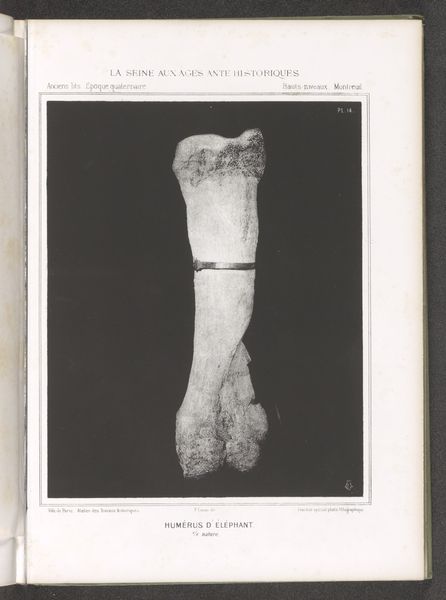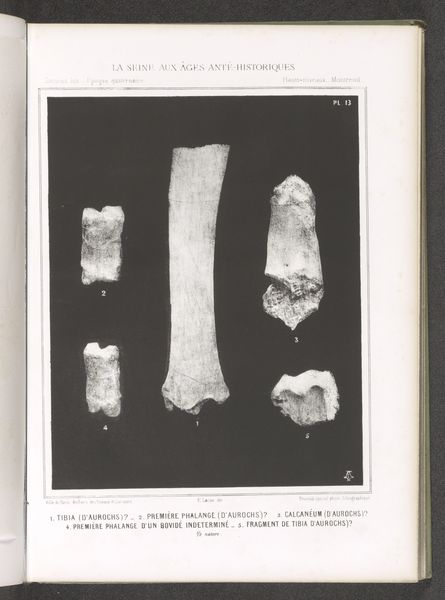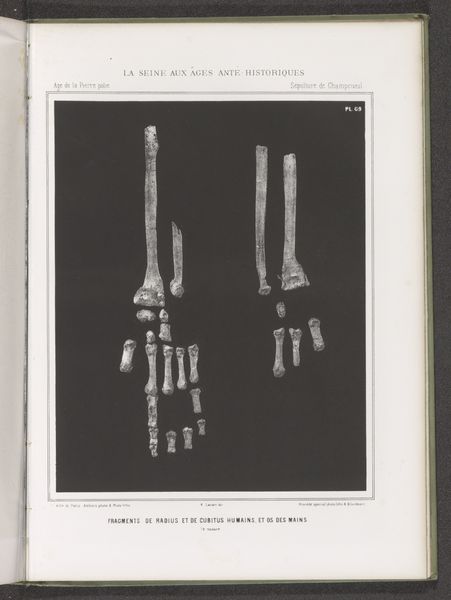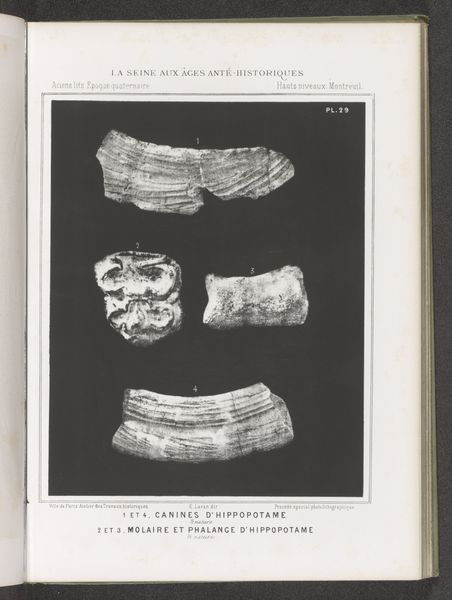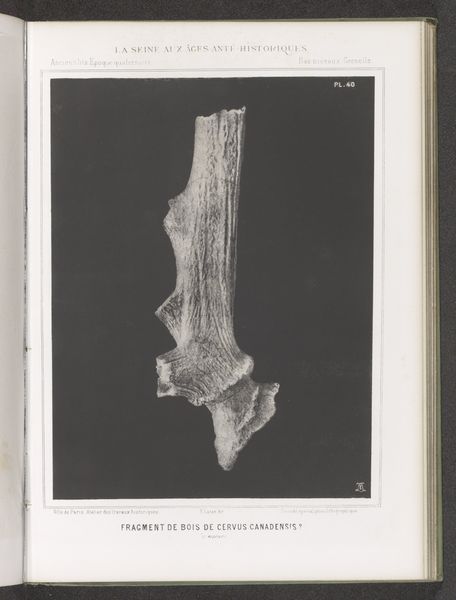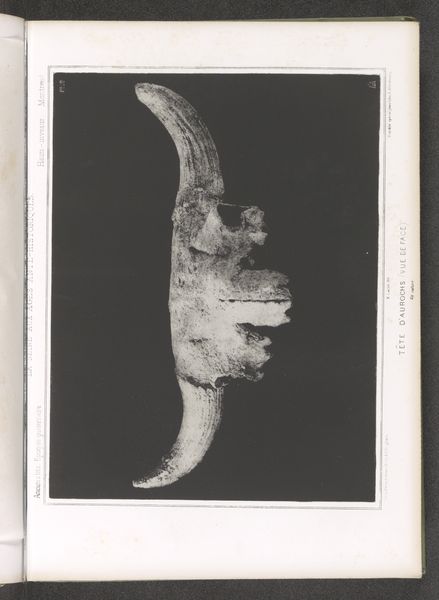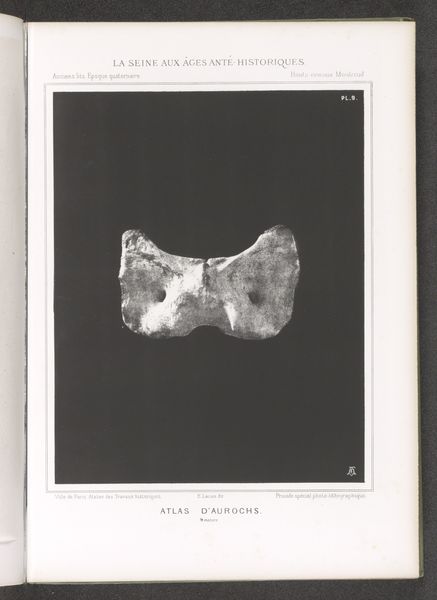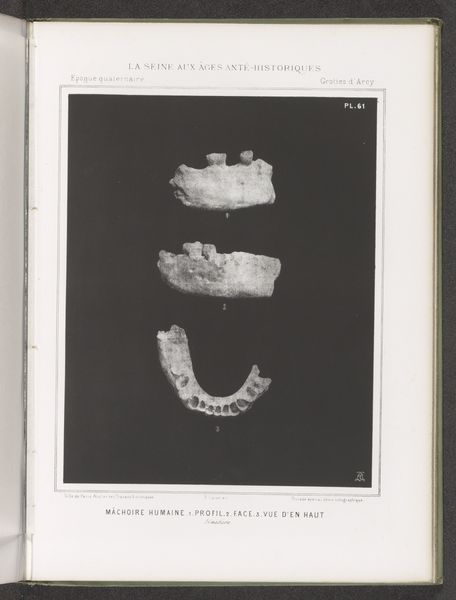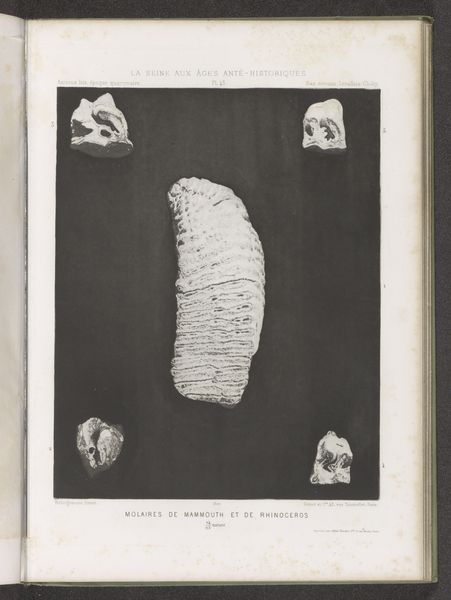
print, photography, gelatin-silver-print
#
aged paper
#
still-life-photography
#
homemade paper
#
script typography
# print
#
sketch book
#
hand drawn type
#
photography
#
personal sketchbook
#
hand-drawn typeface
#
ancient-mediterranean
#
gelatin-silver-print
#
thick font
#
sketchbook drawing
#
sketchbook art
#
realism
Dimensions: height 238 mm, width 189 mm
Copyright: Rijks Museum: Open Domain
Curator: What a fascinating gelatin-silver print! This piece, simply titled "Botten uit de poten van een oeros," is believed to be made before 1869 by an anonymous photographer. Editor: The austere monochrome lends a stark gravity to the aged remains, doesn't it? The texture of the bones, set against that dark ground, just leaps out. It feels weighty, somehow. Curator: Precisely! The anonymous artist seems to be deliberately focusing our attention on the formal elements: the shape and form of these skeletal fragments. Note the almost clinical precision in how the light defines the contours and ridges. Editor: I'm struck by the historical implications. "Botten uit de poten van een oeros," or "Bones from the feet of an aurochs" pulls me right back into thinking about ecological precarity. The aurochs were extinct by the 17th century; this print speaks to loss, to the heavy consequences of human actions on our ecosystem. What statement is being made? Curator: One might argue that focusing on the cultural conditions and presumptions flattens the significance of the photograph itself. To me, the beauty is the balance of light and shadow, the textured surfaces. Editor: But surely you can't ignore that this still-life photograph evokes an epoch when these creatures roamed freely. Isn't it implicit in its composition a critical commentary on power and extinction? These are not just aesthetically pleasing shapes; they are loaded signifiers. Curator: While I concede that meaning may be extracted, I feel we must not neglect the primary intention—documentary in its time, and exquisite because of the way form is captured by the artist's gelatin silver development. Editor: I agree that there's merit in examining technique; though, it's also essential to recognize the image as a cultural artifact loaded with meaning and inviting action. It's never just about what you see. Curator: Perhaps therein lies the brilliance of it all: a successful photograph speaks of both the universal qualities of artistic design, and particular moments in the history from which we inherit our world. Editor: Exactly. Thank you for that elegant reconciliation of perspectives; these bones ask a question about past, present and future.
Comments
No comments
Be the first to comment and join the conversation on the ultimate creative platform.
